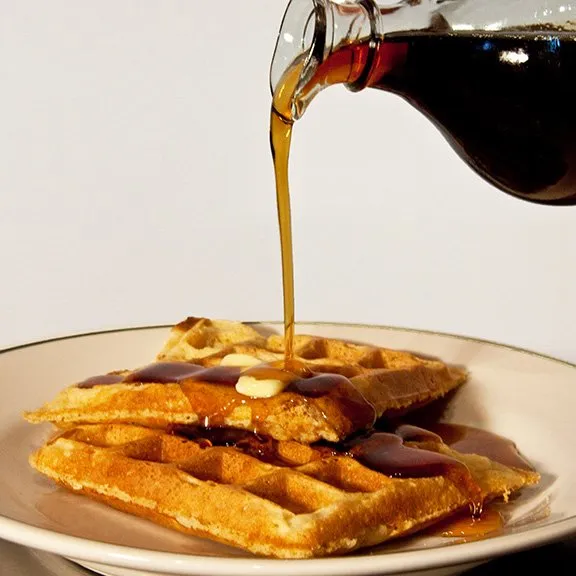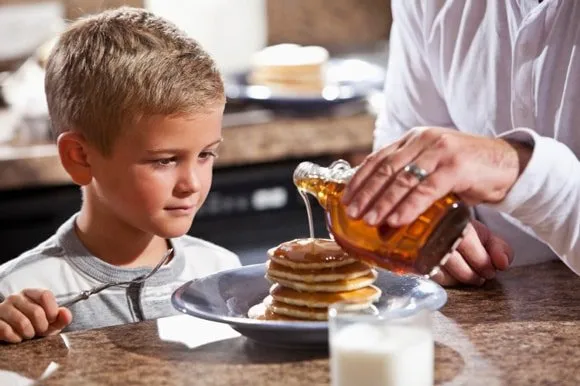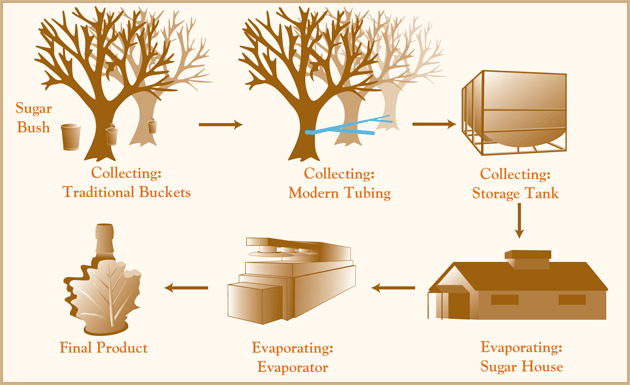
My favorite topping for Pancakes in the morning is, you guessed it: Maple Syrup. Eating some for breakfast this morning inspired me to find out how it's made. So here I am sharing it with you!

What Is It?
Maple syrup is a syrup usually made from the xylem sap of sugar maple, red maple, or black maple trees, although it can also be made from other maple species. In cold climates, these trees store starch in their trunks and roots before the winter; the starch is then converted to sugar that rises in the sap in late winter and early spring. Maple trees are tapped by drilling holes into their trunks and collecting the exuded sap, which is processed by heating to evaporate much of the water, leaving the concentrated syrup.
Maple syrup was first collected and used by the indigenous peoples of North America, and the practice was adopted by European settlers, who gradually refined production methods. Technological improvements in the 1970s further refined syrup processing. The Canadian province of Quebec is by far the largest producer, responsible for 70% of the world's output; Canadian exports of maple syrup in 2016 were C$ 487 million (approximately US$ 360 million), with Quebec accounting for some 90% of this total. Vermont is the largest producer in the United States, generating about 6% of the global supply.
Maple syrup is often eaten with pancakes, waffles, French toast, oatmeal or porridge. It is also used as an ingredient in baking, and as a sweetener or flavouring agent. Culinary experts have praised its unique flavour, although the chemistry responsible is not fully understood.

How Is It Made?
Maple syrup production is centred in northeastern North America; however, given the correct weather conditions, it can be made wherever suitable species of maple trees grow. A maple syrup production farm is called a "sugarbush" or "sugarwood". Sap is often boiled in a "sugar house" (also known as a "sugar shack," "sugar shanty," or cabane à sucre), a building louvered at the top to vent the steam from the boiling sap.
Maples are usually tapped beginning at 30 to 40 years of age. Each tree can support between one and three taps, depending on its trunk diameter. The average maple tree will produce 35 to 50 litres (9.2 to 13.2 US gal) of sap per season, up to 12 litres (3.2 US gal) per day.[42] This is roughly equal to 7% of its total sap. Seasons last for four to eight weeks, depending on the weather. During the day, starch stored in the roots for the winter rises through the trunk as sugary sap, allowing it to be tapped. Sap is not tapped at night because the temperature drop inhibits sap flow, although taps are typically left in place overnight. Some producers also tap in autumn, though this practice is less common than spring tapping. Maples can continue to be tapped for sap until they are over 100 years old.

There you have it guys! That's how Maple Syrup is made, let me know what you thought in the comment! Remember, Upvote, Follow and Resteem if you liked the content, it's important to support quality content on Steemit and a lot of time goes into these posts! @king-crypto

